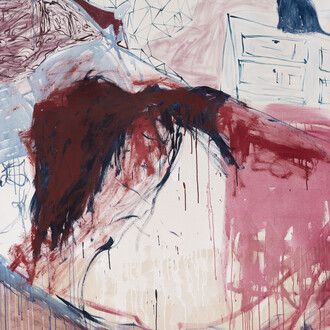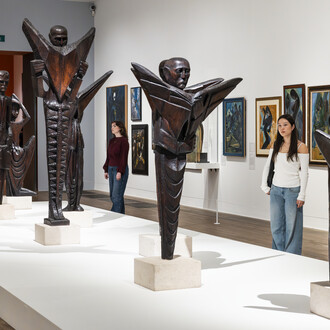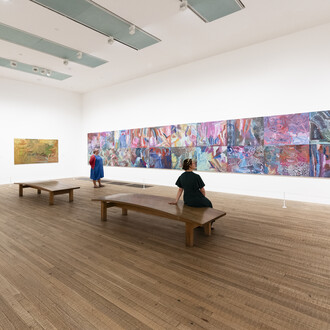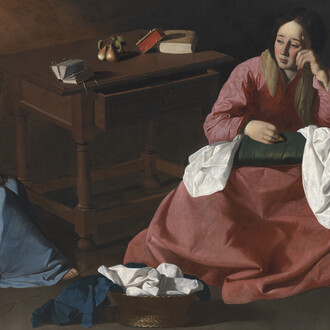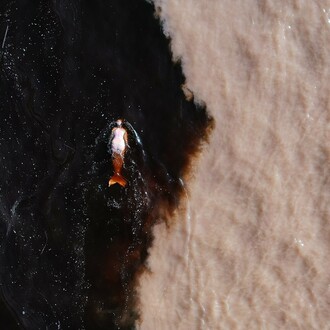This spring, Tate Modern will present a major survey exhibition of the work of Do Ho Suh, marking the first major solo showing of his work in London for a generation. The artist invites visitors to explore his large-scale installations, sculptures, videos and drawings, asking questions about the enigma of home, identity and how we move through and inhabit the world around us. The exhibition will present the breadth and depth of Suh’s unique practice over the last three decades, spanning locations including Seoul, New York, and London – the three cities he has called home, and featuring new site-specific works on display for the first time.
The exhibition’s title Walk the house is drawn from a Korean expression referring to the hanok – a house that could theoretically be disassembled, transported and reassembled at a new site. Reflecting this idea of a transportable home, Suh’s immersive works examine the relationship between architecture, space, the body, and the memories that make us who we are. The artist has stated that ‘The space I’m interested in is not only a physical one, but an intangible, metaphorical, and psychological one. For me, ‘space’ is that which encompasses everything’.
While Suh’s practice is rooted in his own experiences, it welcomes viewers to fill the works both physically with their presence and psychologically with their inner worlds. Visitors will be able to wander through his fabric architectures – translucent 1:1 scale replicas of spaces in which the artist has lived and worked. These include the ambitious new installation Nest/s 2024, which colourfully weaves together corridors and entryways, highlighting the porous nature of boundaries traditionally thought of as fixed. Also presented for the first time is Perfect home: London, Horsham, New York, Berlin, Providence, Seoul 2024, an outline of the artist’s present home in London, filled with brightly coloured architectural features, including doorknobs, light switches and electrical sockets, that playfully trace the domestic spaces the artist and his family have previously lived in.
Other major works will include Who am we? 2000, a mosaic of tens of thousands of tiny portrait photographs collected from sources including school yearbooks – an early example of the artist’s reflections on individual and collective identity, as well as Rubbing/loving project: company housing of Gwangju Theater 2012, a work reflecting on the violent aftermath of the Gwangju Uprising in South Korea in 1980. His major Rubbing/loving project: Seoul home 2013-22 will also be presented; the culmination of a decade-long journey rooted in the intimate tradition of rubbing practices in Korea, which began with the artist covering the entire internal structure of his childhood home in paper, caressing the layer with graphite to produce its impressions in two-dimensions.
As well as these epic installations, lesser-known facets of Do Ho Suh’s practice will be introduced, including works on paper created between 2000 and the present day. The exhibition will present his evocative Staircase 2016, made by dissolving a paper sculpture onto a sheet of wet paper, thereby translating the three-dimensional form onto a two-dimensional plane. Much like Suh’s fabric architectures, these works allow him to create portable versions of parts of his past homes. Also on view will be the artist's complex and playful thread drawings, where vibrantly coloured threads are sewn into handmade paper, echoing his use of fabric to outline three dimensional spaces.
Tate will also present two of Suh’s video works – Robin Hood gardens 2018 and Dong in apartments 2022 – both of which feature photogrammetry, a technically detailed process which stitches together images to produce a digital model of the physical world. Through this process Suh strives to explore the built environment as a living organism, a witness to the traces left behind by past inhabitants. In his attempt to recreate and remember elements of past and present homes, Suh demonstrates the impossibility of preserving something fully, whether a memory, a place, or a moment in time. The exhibition will culminate in a space dedicated to Do Ho Suh’s Bridge project – an ongoing interrogation of the notion of a ‘perfect home’ which grapples with how this hypothetical space intersects with real-world social, political and ecological issues.





